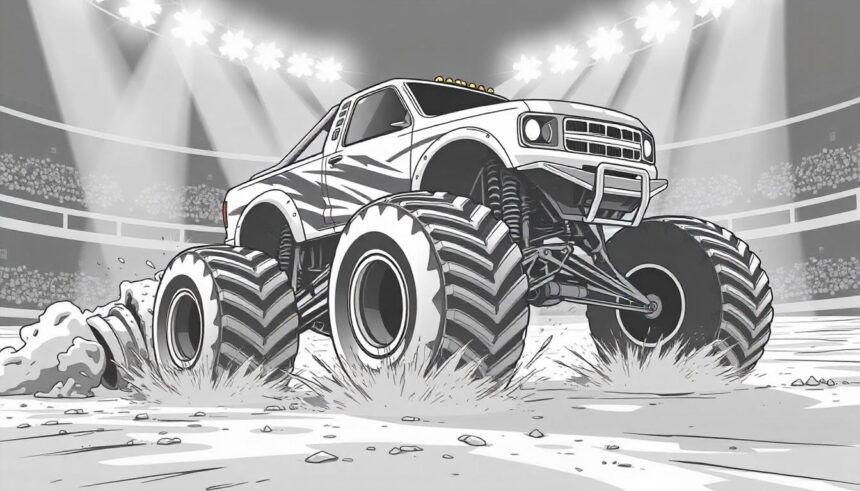Drawing a car can seem like a daunting task, but it doesn’t have to be. Whether you’re an aspiring artist or just looking for a fun way to pass the time, sketching vehicles is both rewarding and enjoyable. Imagine transforming simple shapes into sleek machines that zoom across your page! With the right guidance, you’ll soon find yourself creating detailed drawings of cars that impress friends and family alike. So grab your pencil and paper as we embark on this creative journey together—let’s dive deep into how to draw a car!
The Basics of Drawing a Car
Understanding the basics of drawing a car starts with familiarizing yourself with its shapes and proportions. Cars generally consist of geometric forms like rectangles, circles, and triangles. These foundational shapes help you build the overall structure.
Begin by sketching a simple outline. A rectangle for the body, two circles for wheels, and additional lines to represent windows can create a rough framework. This initial step allows you to focus on proportions without getting bogged down in details.
Next, consider perspective. A car viewed from the side looks different than one seen at an angle or from above. Adjust your shapes accordingly to capture depth and dimension.
Remember that each make and model has unique features—like curves or sharp edges—that define its character. Observing real cars will enhance your ability to replicate their essence on paper as you progress in your drawing skills.
Choosing the Right Materials
Choosing the right materials is crucial when learning how to draw a car. Your choice can greatly impact the outcome of your artwork.
Start with paper that feels good to you. Smooth surfaces are great for fine details, while textured papers add depth and character.
Next, select your drawing tools. Pencils are versatile; they allow for easy corrections and blending. A range of hardness—from HB to 6B—lets you play with different shading techniques.
If you’re feeling adventurous, consider using colored pencils or markers. They can bring vibrancy to your design and help create eye-catching highlights.
Don’t forget about erasers! A good kneaded eraser is perfect for lifting graphite without damaging the paper.
Experimenting with different materials will enhance your skills as an artist and make the process more enjoyable. Each tool contributes its unique touch, making every drawing truly yours.
Step-by-Step Guide to Drawing a Car
Start by sketching the basic shapes. Use rectangles and circles to outline the car’s body and wheels. This will serve as your framework.
Next, refine those shapes into a more defined silhouette. Add curves and angles to give it personality. Pay attention to proportions; they can really change the look.
Now, focus on details like windows, headlights, and doors. These small features add depth and realism.
Once you’re happy with the structure, switch to inking or darker pencils for clarity. Erase any unnecessary lines from your initial sketch.
Don’t forget shadows! They create dimension and make your drawing pop off the page. Consider adding color if you want to bring life to your creation.
Tips and Techniques for Adding Realistic Details
Adding realistic details can elevate your car drawing from basic to breathtaking. Start by observing real cars closely. Pay attention to reflections, shadows, and highlights.
Use shading techniques to create depth. Soft gradients can mimic the curve of a fender or the shine on windows. Experiment with hatching and cross-hatching for texture.
Don’t forget about wheels—they’re crucial! Add dimension by including tire treads and varying line thicknesses.
For added realism, incorporate elements like license plates or headlights that capture light differently than the bodywork. Small touches make a big impact.
Consider color too; it brings life to your drawing. Use colored pencils or markers sparingly for accents rather than full coverage.
Remember proportions are key. Ensure that components fit together naturally; this will enhance the overall authenticity of your artwork.
Different Styles of Cars to Draw
When it comes to drawing cars, the variety is endless. From sleek sports cars to vintage classics, each style offers its own charm.
Consider the modern sedan. These vehicles boast clean lines and aerodynamic shapes, making them perfect for beginners. They allow you to practice symmetry and proportion effectively.
On the other hand, muscle cars are all about boldness. The wide stance and powerful features present an opportunity to focus on exaggerated curves and aggressive styling.
If you’re feeling adventurous, try sketching a classic car like a 1950s Cadillac. Its unique details, such as tail fins and chrome accents, can challenge your skills while showcasing intricate design elements.
Don’t forget about concept cars! These futuristic designs push creativity boundaries with unconventional shapes and imaginative aesthetics that invite experimentation in your art style.
Common Mistakes to Avoid
One common mistake when learning how to draw a car is skipping the basic shapes. Many artists dive straight into details, neglecting the foundational structure. Start with simple rectangles and circles to outline proportions.
Another pitfall is ignoring perspective. Cars have depth, which can be lost if you don’t establish a vanishing point. Ensure your lines converge correctly for a more realistic look.
Proportions often get overlooked too. Pay attention to the size of wheels in relation to the body of the car. An oversized wheel can make your drawing appear cartoonish.
Shading is another area where beginners falter. Instead of haphazardly applying shadows, observe light sources carefully and apply shading consistently for added realism.
Don’t rush through textures like windows or metal surfaces. These elements enhance authenticity but require time and precision to depict effectively.
Conclusion
Drawing a car can be an enjoyable and fulfilling experience. By mastering the basics and choosing the right materials, you set yourself up for success from the start. Following a step-by-step guide helps simplify the process, allowing you to see your vision come to life.
Incorporating realistic details elevates your work, making it more relatable and impressive. Exploring different styles adds variety to your portfolio while avoiding common mistakes keeps frustration at bay.
Whether you’re a beginner or looking to sharpen your skills, understanding how to draw a car opens up new creative avenues. Let each sketch become not just practice but also an expression of your unique artistic voice. Keep experimenting, stay curious, and watch as your ability grows with every drawing session.







